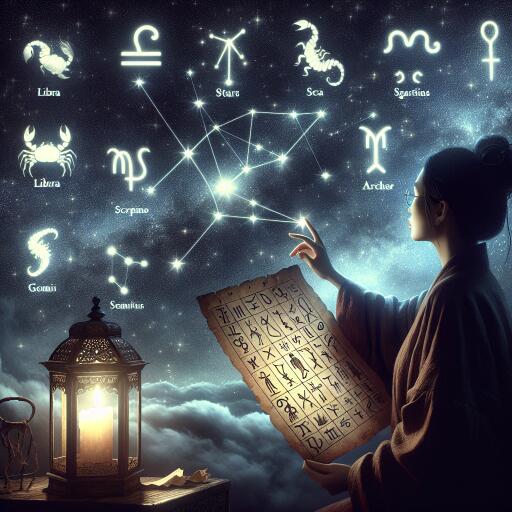Understanding the Influence of Moon Phases on Human Behavior and Emotions
The celestial dance between Earth, the Moon, and the Sun has fascinated humanity for millennia. Among all celestial bodies, the Moon, with its mesmerizing luminescence and cyclical phases, has always held a particular allure. The lunar phases—New Moon, Waxing Crescent, First Quarter, Waxing Gibbous, Full Moon, Waning Gibbous, Last Quarter, and Waning Crescent—not only illuminate our night sky but are also believed to exert a significant influence on human behavior and emotions.
This article delves into the intriguing world of lunar astrology, exploring how the different phases of the Moon purportedly impact our lives and well-being.
The New Moon: A Time for New Beginnings
The New Moon marks the beginning of the lunar cycle, when the Moon is aligned between Earth and the Sun, rendering it invisible from our perspective. Astrologically, this phase symbolizes new beginnings, making it an auspicious time to set intentions, start new projects, or initiate change. People might feel a surge of energy and motivation during this period, driven by the desire to embark on fresh endeavors or turn over a new leaf.
The Waxing Crescent to First Quarter: Building Momentum
As the Moon waxes from a sliver of light to a half-lit sphere, this period is associated with growth, learning, and development. Astrologically, it represents a time to act on the intentions set during the New Moon, to put plans into motion, and to face challenges head-on. This phase encourages resilience and determination, as the increasing light symbolizes progress and the gradual manifestation of goals.
The Waxing Gibbous: Fine-Tuning and Adjustment
Leading up to the Full Moon, the Waxing Gibbous phase is a period of refinement and adjustment. During this time, individuals are encouraged to reassess their goals, make necessary adjustments, and overcome any obstacles that may have emerged. It’s a time for introspection and fine-tuning, ensuring that one’s efforts are aligned with their objectives. People might find themselves paying more attention to detail and striving for perfection in their endeavors.
The Full Moon: Culmination and Release
The Full Moon is perhaps the most well-known and energetically potent phase, with its bright illumination signifying the completion or culmination of the cycle started at the New Moon. Emotions tend to run high during this phase, as the Full Moon is believed to amplify feelings and intuitions. It’s a period often associated with heightened creativity, insight, and psychic ability. Astrologically, the Full Moon is a time to celebrate achievements, release what no longer serves us, and let go of negative energies.
The Waning Gibbous to Last Quarter: Reflection and Gratitude
As the Moon begins to wane, the focus shifts towards gratitude, reflection, and sharing achievements with others. The light starts to decrease, symbolizing a time to give thanks, reflect on what has been learned, and share the abundance and insights gained with those around us. It’s a period to appreciate the progress made and the journey itself, rather than just the destination.
The Waning Crescent: Surrender and Rest
In the final phase before the New Moon, the Waning Crescent represents a period of surrender, rest, and rejuvenation. With the cycle nearing its end, this phase is a time to rest, restore energy, and prepare for the new cycle ahead. It’s a reminder of the importance of rest and relaxation, encouraging individuals to slow down, meditate, and rejuvenate their spirits before the cycle begins anew.
Scientific Perspective and Psychological Aspects
While astrology provides a spiritual and symbolic interpretation of the Moon’s influence, science offers a different viewpoint. Studies have explored the relationship between the lunar cycle and human behavior or emotions, with some suggesting links to sleep patterns, mood disorders, and even emergency room visit frequency. However, the scientific community remains divided, with conclusive evidence still elusive.
From a psychological standpoint, the Moon’s phases can serve as a powerful metaphor for personal growth and development. They remind us to be mindful of the natural cycles in our lives and the importance of balance between action and rest, giving and receiving, and making space for new beginnings after letting go of the old.
Conclusion
The enigmatic Moon has captivated us not just with its physical beauty but with the profound effects it is believed to have on our inner landscapes. Whether through the astrological lens or the scientific perspective, the lunar phases offer a rich tapestry of symbolism and potential insights into human behavior and emotions. By aligning ourselves with these natural cycles, we may find a deeper connection to the rhythms of the cosmos and our place within it.
In the end, whether one views the Moon’s influence through a mystical, astrological, or scientific lens, its phases can serve as a powerful metaphor for the ebb and flow of life itself. The Moon’s cycle teaches us about growth and decay, reminding us that every end is merely the precursor to a new beginning.


